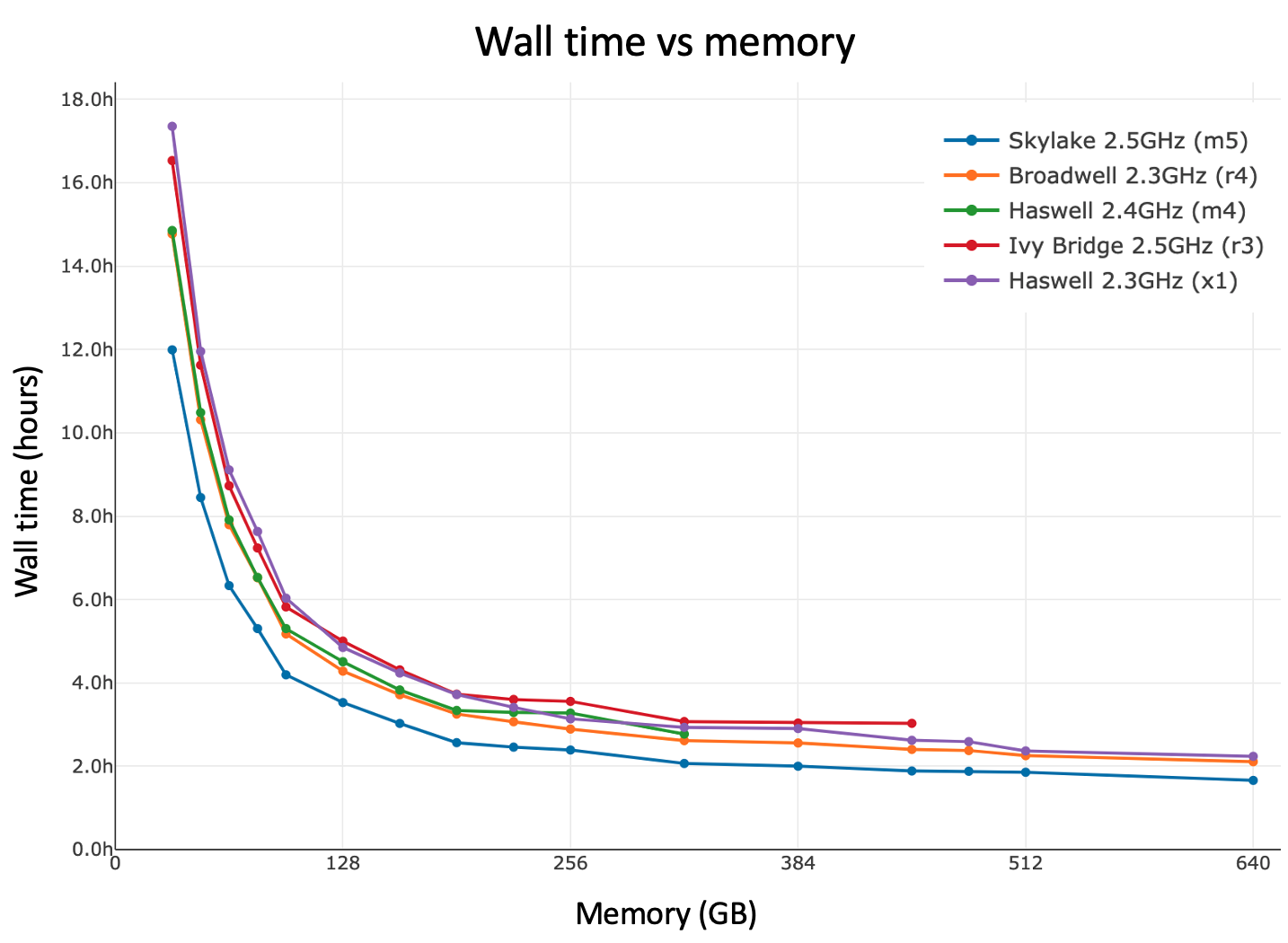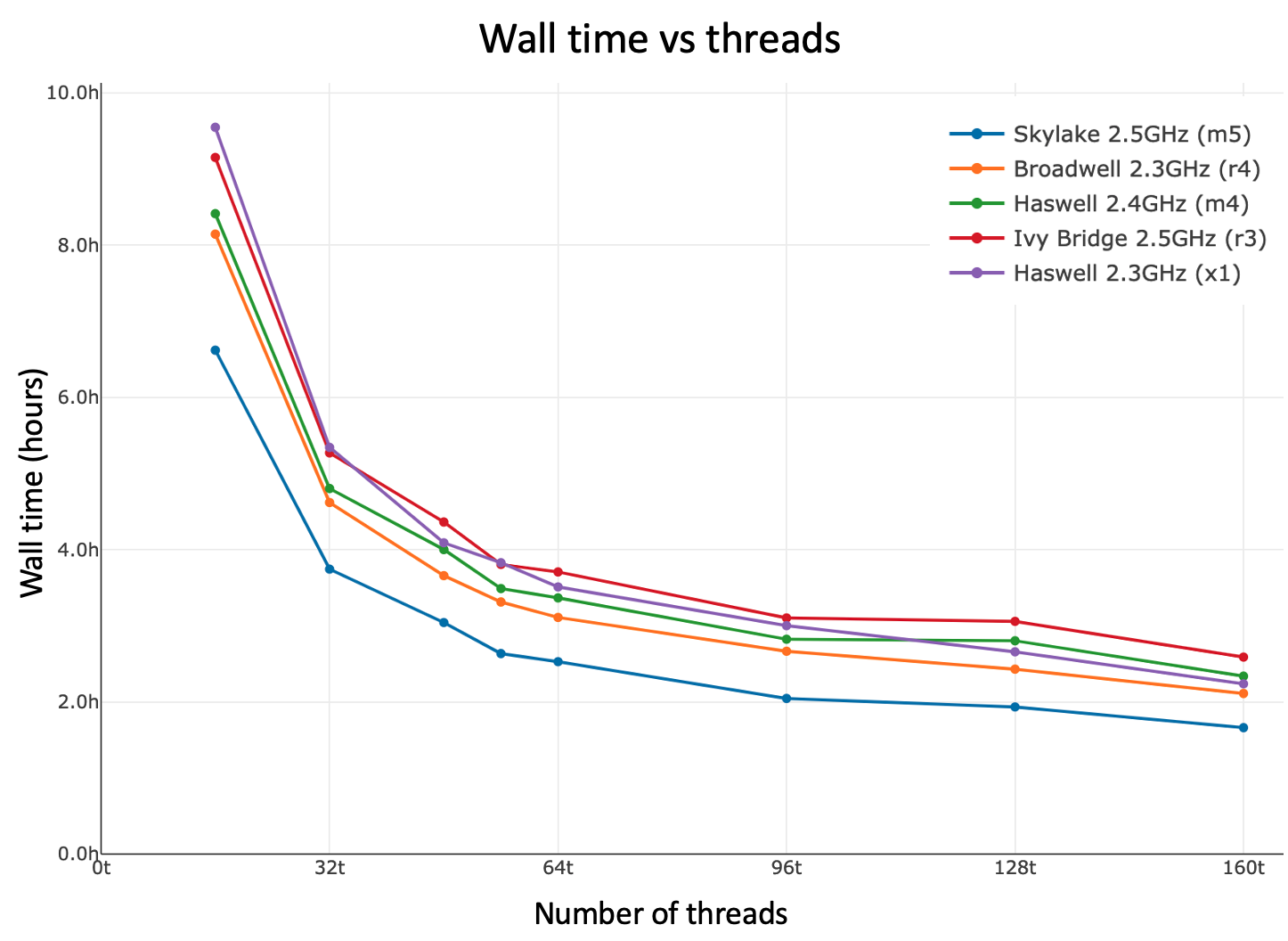Cell Ranger ATAC pipelines run on Linux systems that meet these minimum requirements:
- 8-core Intel or AMD processor (32 cores recommended) which supports the AVX instruction set, introduced in 2011 on both Intel and AMD CPUs. AVX2 will be required in the future, introduced in 2013 on Intel CPUs and in 2015 on AMD CPUs.
- 64 GB RAM
- 1 TB free disk space
- 64-bit CentOS/RedHat 7.0 or Ubuntu 18.04. See the 10x Genomics OS Support page on the Cell Ranger support site for additional details.
Note: Cell Ranger ATAC v2.0 was the last version that supported CentOS/RedHat 6.0 or Ubuntu 12.04.
In order to run in cluster mode, the cluster needs to meet these additional minimum requirements:
- Shared file system (e.g. NFS)
- SGE or LSF batch scheduling system
In order to run cellranger-atac mkfastq, the following software needs to be installed:
- Illumina® bcl2fastq: bcl2fastq must be version 2.20 or higher.
- Cell Ranger ATAC runs with
--jobmode=localby default, using 90% of available memory and all available cores. To restrict resource usage, please see the--localmemand--localcoresflags forcellranger-atac countat the link here for more information. - Many Linux systems have default user limits (ulimits) for maximum open files and maximum user processes as low as 1024 or 4096. Because Cell Ranger ATAC spawns multiple processes per core, jobs that use a large number of cores can exceed these limits. 10x Genomics recommends higher limits.
| Limit | Recommendation |
|---|---|
| user open files | 16k |
| system max files | 10k per GB RAM available to Cell Ranger ATAC |
| user processes | 64 per core available to Cell Ranger ATAC |
The following data is based on time trials using Amazon EC2 instances, our PBMC 10k dataset, and version 2.0 of Cell Ranger ATAC. Performance is dependent on both the number of cells and the number of reads per cell. These plots will not be updated with every subsequent release of Cell Ranger ATAC, unless pipeline performance changes significantly.
| Instance | Threads | Memory (GB) | Core hours | Wall time | Storage HWM (GB) |
|---|---|---|---|---|---|
| r3.8xlarge (Ivy Bridge) | 32 | 64 | 129 | 5h 14m | 285 |
| m5.24xlarge (Skylake) | 96 | 384 | 92 | 1h 59m | 233 |
| r4.16xlarge (Broadwell) | 64 | 488 | 111 | 2h 58m | 233 |
| r1.32xlarge (Haswell) | 128 | 1952 | 137 | 2h 37m | 233 |
Here is cellranger-atac count walltime as a function of available memory for a variety of CPU architectures. The plots below are meant to convey how increasing memory beyond the minimum and recommended levels may impact runtime for large datasets, but may not be representative of your dataset. In general, performance can be improved by allocating more than the minimum 64 GB of memory to the pipeline. There is notable diminishing return beyond 160 GB.

Shown below is cellranger-atac count walltime as a function of threads. If your system has ≫48 logical cores, you may want to run with --localcores=48 since there is diminishing return beyond 48 threads.
